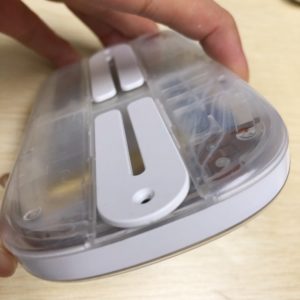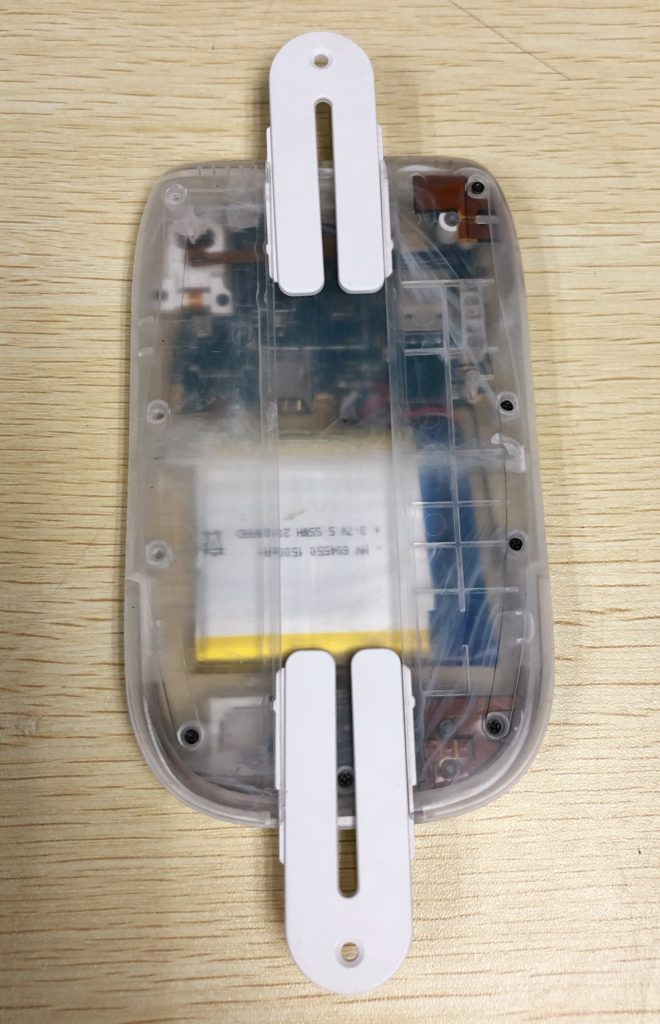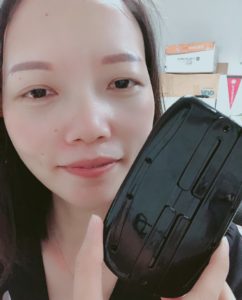Project Scope
Create an industrial grade Android IoT Hub in a custom waterproof case that has all the standard technology of an Android smartphone and interacts with external sensors (such as temperature and humidity sensors or camera) using Bluetooth.
Application Background
Since Android IoT Hub isn’t a well known or well-defined product here’s an explanation.
The Hub, which connects to the internet using mobile data or wifi, acts as a ‘last mile’ communications node between sensors, both internal and external, and a backend system on a remote server.
The Hub receives or asks for data from the sensors via BLE and then sends the information from sensors to the backend server.
Use Cases

The Android IoT Hub provides solutions to the logistics and asset tracking industries.
More specifically the logistics use case includes monitoring location and condition of cargo trucks and warehouses, including cold storage.
In cargo trucks the Hub interacts with temperature, humidity, open/close, and light sensors as well as receiving photos from a stand alone camera.
The sensors provide companies with real time information about the condition of their shipments.
The camera takes a photo each time the truck door is open to see who’s opening the door, which is useful in case things get stolen or inventory reporting doesn’t match reality.
The Hub itself provides location information about the truck using cell tower or Wi-Fi triangulation (triangulation algorithm is processed on the backend not in the Hub) or GPS. The same features are used for monitoring a warehouse, except location data isn’t needed.
Another real life use case for the Andriod IoT Hub is monitoring the status of refrigerators that beverage brands give to stores for advertising their brand (marketing pgraphics on the refrigerator) and keeping drinks cool.
Big drink brands like Pepsi and Coke typically give stores a refrigerator for free to store their brand’s drinks. Often these refrigerators end up in people’s houses instead of in the retail stores where they belong.
A valuable implementation of the Hub has been installing them into refrigerators to monitor movement and location. The accelerometer will sense when the refrigerator moves and when this happens the device will send location data to a backend.
From an online front end interface the system admins can remotely shut off the motor of the refrigeration system making it less appealing to steal.
The practical applications for a waterproof internet connected device which also connects to external devices through Bluetooth are endless.
All of today’s (and yesterday’s) smartphones do this all the time with consumer devices like streaming music to Bluetooth speakers or getting data from a fitness bracelet.
This device essentially does everything a normal Android phone does, except uses an industrial grade waterproof case and runs specialized apps to control system functions from remote locations.
Hardware and Mechanical Requirements

- 3G Telecom Connectivity
- No Screen
- Bluetooth (BLE), Wi-Fi, GPS, Accelerometer
- Multi-Region Telecom Coverage
- IP 66 Waterproof Casings
- Design case to mount on wall
- Internal Li-Ion Battery
Hatch’s Responsibilities
- Custom Android firmware engineering
- Source existing PCBA with unique telecom requirements
- Introduction of Industrial Designer
- Mechanical Engineering
- Creating prototypes
- Tooling for device case
- Manufacturing process optimization
- Create finished product testing procedure
Timeframe
Working prototype delivered 1 month after case design was finished (project kickoff). The reason this was so fast is because the case was designed around an existing PCBA instead of making a custom PCBA to fit into a bespoke case.
Whenever possible Hatch recommends using existing technology to save time and cost, but for many reasons such as competency of existing supplier, quality of product, or availability of product going custom may have greater long term advantages.
Trial production delivered 4 months after kick off. During trial production Hatch worked with the assembly factory to identify ways to improve the production and testing processes, increasing production yield while reducing failures, and speeding up testing without degradation to the thoroughness.
Mass production took place 7 months after kick off. During the first mass production Hatch found additional ways to add efficiencies to the testing process.
How it Happened
Client first contacted Hatch in 2017 and then disappeared for about a year. The client came back after getting their business needs in order and wanted a fast turnaround. The client didn’t have any special hardware or casing requirements so using an existing PCBA seemed like a viable option.
Hatch introduced a product designer to the client to design the case for them. Since the product is intended for use in many different countries Hatch suggested that the device should support as many frequencies as possible in order to work in as many countries as possible.
Based on the (Mediatek) MT6580 chipset that we used the most frequencies we could hope for was quad band 2G and quad band 3G. Most China designed consumer devices only support 2-3 bands in the 3G spectrum, so finding one which supported 4 bands made the search more difficult.
After identifying the most suitable chipset to work with and a PCBA that could support quad band 3G Hatch sent a few normal mobile phone samples to the client so they could test their software.
The client’s apps and the special casing of this custom Android smartphone are what distinguish it from a normal phone, however using the existing normal phone for testing the client’s apps allowed the development process to get a head start since the final product was using the same electronics as in the phone.
Also having a screen on the phone was better for early stage testing so the client could see what was happening on the device and control it easier.
The client’s initial firmware customization requirements seemed pretty basic, but after ongoing testing of their apps they realized that there were many more requirements than initially assumed.
This caused a delay to the project since updates happened on an ongoing basis instead of having all the change requests at the same time, which is a more efficient way to operate.
Result

Through daily cooperation with the client’s software team Hatch was able to fine tune the Hub’s firmware to operate smoothly with the client’s apps.
As usual new issues come up during testing after trial production and sometimes additional issues are found after the first mass production.
There were a few inconsequential issues that were found after the products shipped that Hatch continued to work on fixing with the client.
Like all the projects that Hatch evaluates, the initial client screening was systematic. We like to engage in projects where we believe in the quality of the people and the viability of the business model.
There are many different kinds of client profiles and, based on the profile, we’ll give potential clients honest feedback about whether or not Hatch is a good match for them. The client must be at the point where they’ve done all the preliminary work in order to start focusing on mass production.
By looking at the quality of the people and business model Hatch inherently takes a long term view of our client relationships. Therefore Hatch often continues to dedicate resources to improve products even after shipment in order to deliver the best product possible to make everyone more successful.
Yours truly, Ben Dolgin-Gardner, Hatch founder and Manufacturing Solution Expert


